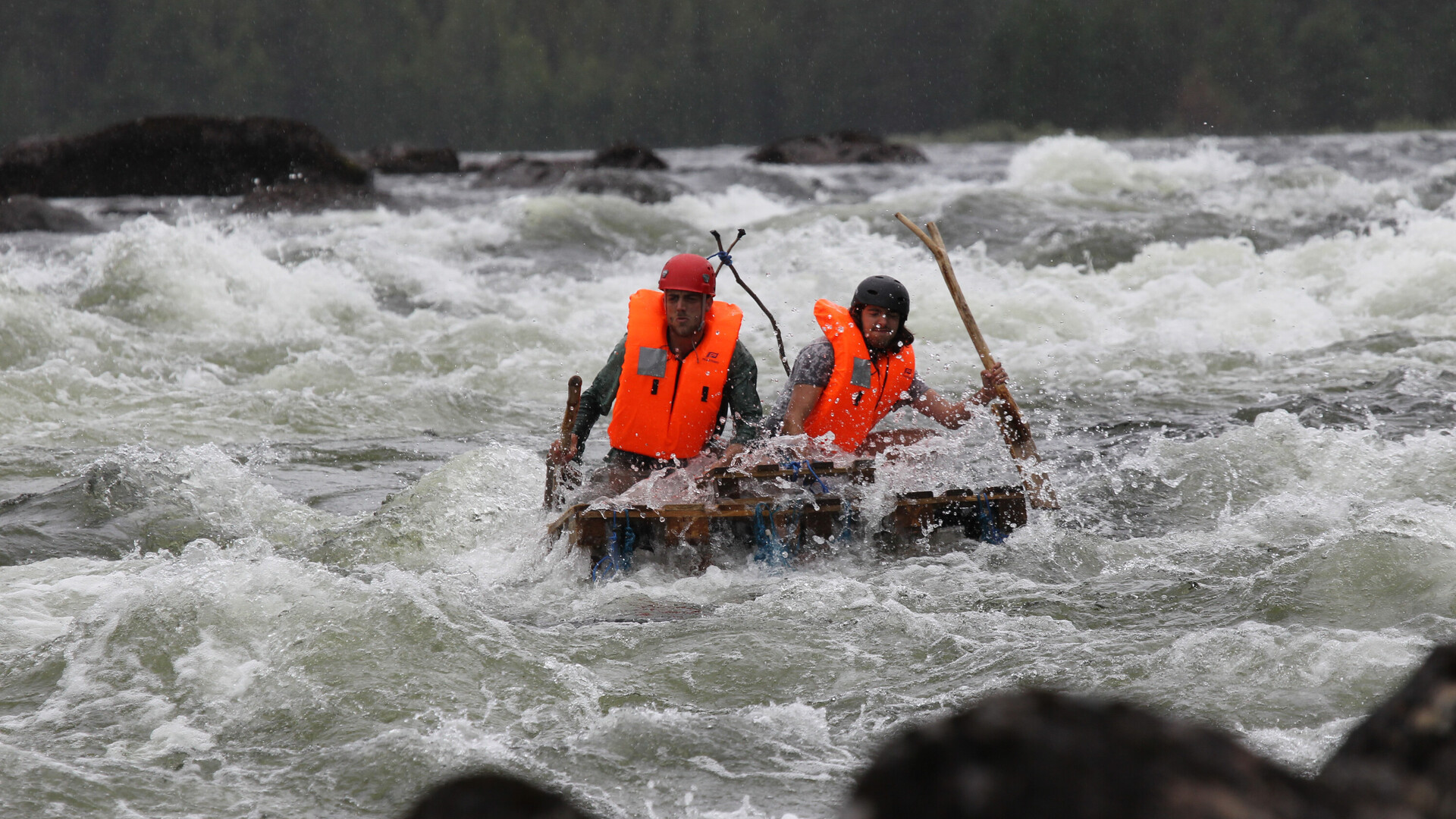
To the Sea
The film To the Sea is part of the European Outdoor Film Tour 2024
Hugo Pedder and Ben Andrews traveled to Sweden several times over a six-year period, paddling toward the Baltic Sea on a raft they built themselves. While their adventure ultimately took them to the sea, the journey itself brought them lifelong friendships.
Table of contents:
Getting ready for the "PAIN TRAIN"
The film ‘To The Sea’ gives us a little insight into the six years in which Ben and Hugo travelled to the Baltic Sea on the Vindelälven. But the two of them have also written down their adventures and we can give you a few deeper insights here.
2015 was one of their toughest years. Mosquitoes everywhere, lots of rain and challenging rapids. But in addition to the challenges, there were also very nice experiences and encounters, such as with Kathy and Grahame, who both moved from Germany to Vormsele (both also in the film). Ben and Hugo got to know them during a little ‘village stroll’ in Vormsele.
The last day of the 2015 trip was particularly exciting and you can read about it here:
An extract from the diary
This was a big day...our biggest so far. We had a hearty preparatory breakfast for the day to come and then explored the different islands and channels to try to give our route a closer inspection.
After thinking about the warning from the chef in the cafe up by the road, we decided it was just too dangerous for us to do the central channel with the water as high as it was...but we didn’t want our last day to be a boring exhausting portage, so we decided to take Mel down the side stream channels to the South.
The only problem was that in order to get to the South side of the river, we had to paddle directly across the mouth of Mårdselefors...(a huge rapid) which meant that if we didn’t paddle hard enough we would end up going down the central channel whether we wanted to or not! It was exhausting work, but we managed to make it across and then creep along the bank back upstream to try to find a way into the smaller side streams.
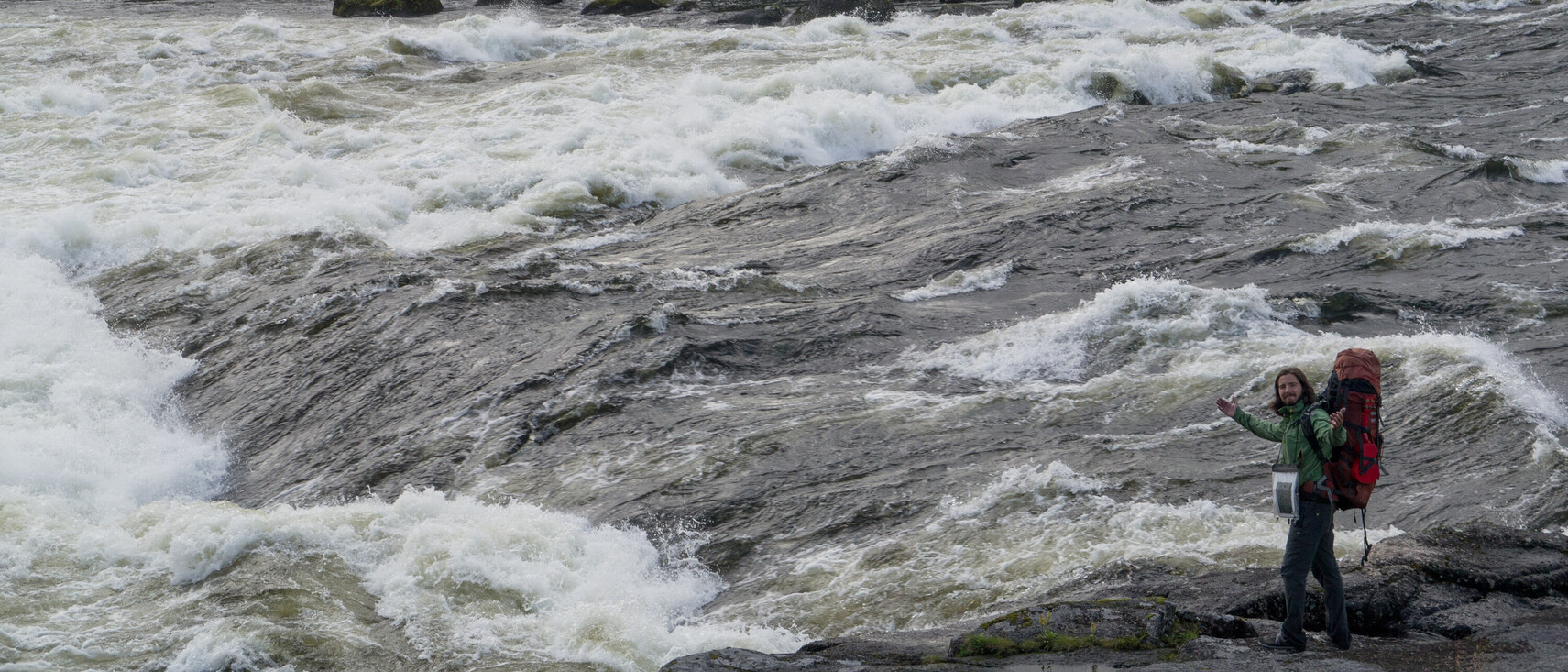
The South side of the channel had been dammed up by loggers in times of old, so route finding was quite a challenge. When we did eventually find an entrance, it was such a tight fit that we had to separate the 3 palettes floats of Mel so that we could let them wash down the first section of rapids one-by-one. Then, as we knew there were more small rapids to come, we tied the separate floats along a length of rope, so that they were connected in a sort of train. So I rode one, Ben rode another, and our gear sat on the last one, with all the floats connected loosely by the tow rope. We didn’t quite have the grace of when we travelled on the full raft, as it was incredibly hard to balance and paddle.
We managed to hop off the float train just in front of the waterfall (…) after removing our bags and preparing ourselves, we launched the floats down the waterfall one-by-one, much to the amusement of all the tourists watching! The palettes took a real battering - one of the plastic cans popped out of one, and we lost one float downstream before we were able to catch it!
We were terrified that we’d lost it (the end of Melissa!) but some sunbathers had seen it floating past and decided to pull it out of the water to have a play with it! We hopped on the other two floats which had stayed stuck at the base of the waterfall and heroically rode them down to join up with the third. We must’ve been quite a strange spectacle!

Then we roped up the floats again with the tow line and carried on downstream on the float train. It wasn’t long before we were unhorsed by a set of smaller rapids we tried to ride down - the float train really wasn’t the best mode of transport!
As we continued, the passage got shallower and rockier, yet faster and faster flowing as the side channels started to flow together to reform with the central channel. The separated floats would constantly get stuck on the boulders, and the tow line was becoming tangled in everything, but we couldn’t properly reassemble them to form the raft as the channel was still too narrow.
We were getting cold and exhausted from heaving the floats over rocks, as we’d been doing this all day half swimming in icy water, and eventually it became too rocky and fast flowing to carry on, especially as we were really starting to lose focus and potentially put ourselves in danger. We decided we had to portage them round the last section of rapids into the main channel.
But to do that we had to remove all the bags from the floats whilst still in the middle of one of the streams. And that was not a good idea… Whilst we were passing one of the bags to the bank, our large bag containing our food, shoes, waterproof poncho and GoPro (with 32GB worth of footage) got swept off the float and down the river. We didn’t even notice it was gone until it was too late.
Absolutely devastated, we tried to find it in the white water, hoping that it had gotten stuck on a rock, but we were so tired and cold at this point that it was getting very dangerous stumbling around in the fast flowing water. We gave up, and with the last of our energy we carried the floats through the forest and into the main channel just after Mårdselefors, where we reassembled Melissa.
After one final check (running up and down the riverbank through mosquito-plagued forest) we carried on downstream, taking on a couple of smaller rapids directly as we didn’t have the time or the energy to properly scope them out. We were in a pretty bad way!
The flow after Mårdselefors was incredibly fast, so we got quite far downriver in a very short space of time, but eventually there was a point that the river came close to the road and we pulled up beside the bank. Then we dragged the floats out of the water and prepared Melissa for the Winter in record time - it only took about 30 minutes in total...last year it was about two hours!

We had planned to visit Jonas for our final night, but it was 10pm at this point, and too late to hitchhike the hour to drive to his, so we called him to apologise. With no food, shoes or tarpaulin to sleep under (since we’d left that to cover Melissa for the Winter), we were in a bit of a pickle! So we hitched to the nearest place that felt like home - Vormsele.
We were quite amazed to get a lift so late at night, and so happy once we got there as we knew there was a hut by the river we could sleep in, even though we still had no food. In fact, the only thing we had was about 1/8th of a bag of peanuts, which gave some justice to the expression “we’ve got peanuts!” (a phrase meaning “we have nothing” in English).
We plucked up the courage to knock on the door of Katharina and Grahame, who had said we should knock if we ever needed any help...and were met by an incredibly warm welcome. They were so lovely and hospitable, and immediately invited us in and made us dinner (bearing in mind that this was at around 11pm) and gave us each a beer! Then they took us to an apartment in the village that was available and showed us beds we could sleep in and a place where we could have a warm shower! It was such a contrast to the cold hungry night we’d been expecting, and such a relief after such a traumatic day, that we almost wept with gratitude.
Having a warm bed, with a roof over our heads and a shower, was such an incredible feeling. We slept like the dead that night, glad to have lots only our possessions and nothing more serious.
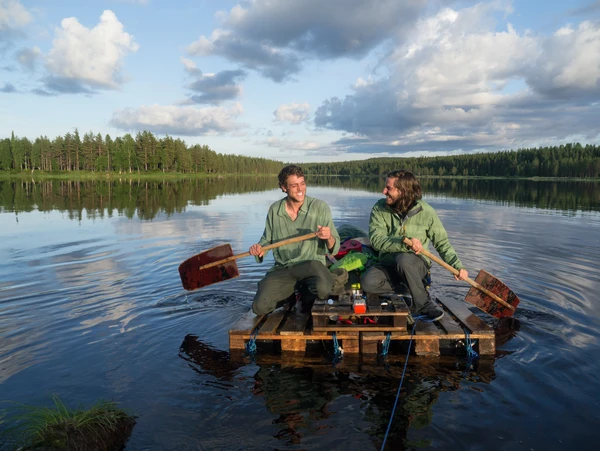
In conversation with Hugo and Ben
In 2013, you built a raft using six wooden pallets and big plastic containers, dubbed it “Melissa”, and paddled it in several stages along the Vindelälven river in northern Sweden to the Baltic Sea. Traveling to the same place repeatedly over such a long period of time, you must know each other pretty well. How did you two meet?
BEN ANDREWS We first met at a training camp for an expedition to Svalbard in 2008, where we were participating in a three-month scientific expedition.
HUGO PEDDER Yes, we hit it off immediately. There were two teams—one doing mountaineering and the other doing research and data collection. Funnily enough, we were never on the same team!
BEN Putting us on the same team would have been too much of a liability!
How did you come up with the idea of going down a river in Sweden? And why
the Vindelälven?
HUGO During my studies, I spent a semester in Uppsala as part of the ERASMUS program, where I met my girlfriend at the time. I lived in Sweden for a while after my studies, and after his Interrail trip, Ben came to visit me so we could go rafting. To plan the trip, I just looked up Swedish rivers on Google Maps using the satellite view, and the Vindelälven seemed to be a good choice. We found out later that the river had been used to transport logs in the 20th century and that they had blasted some rapids with dynamite for this purpose, which was also good for our plans.

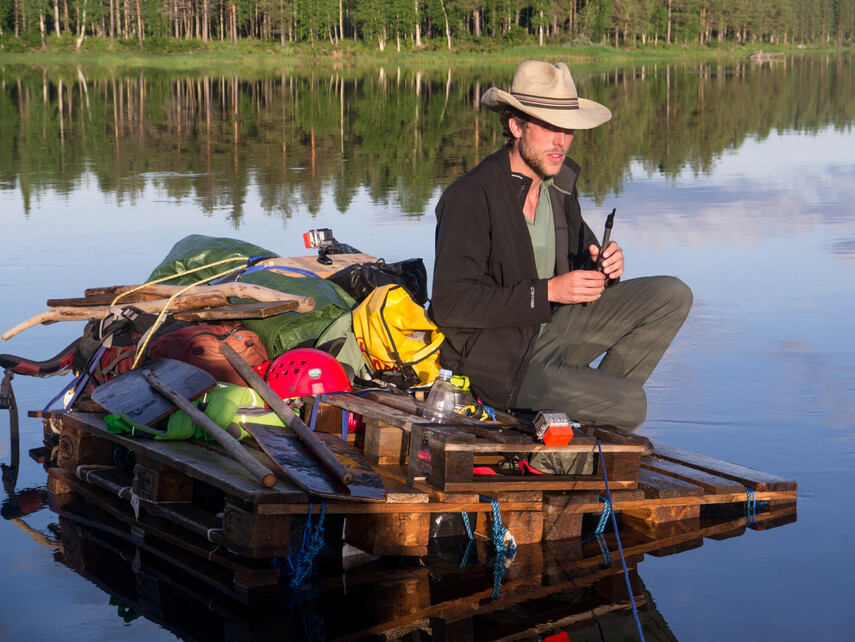
At what moment in the first year did you realize you were not going to make it to the
sea within two weeks?
HUGO The goal of getting to the sea didn't even exist at that point. When we had finished building Melissa and she was actually buoyant, we just said, "Oh my God, that's great!" We just sat on it, drank beer, floated around a bit. At some point, we started paddling and thought: We've covered a lot of ground! Then we realized we had actually only covered one kilometer.
BEN We got to the first rapid and thought: Nope, that's not going to work. So, we dismantled the raft and portaged it around the whitewater. That took us a whole day because Melissa is just so heavy, and we knew we couldn’t do that every time. When we got to the next rapid, we were
so tired and thought: Oh, come on, let's just give it a go. And it actually worked! From then on, we knew in theory that we could make it to the sea.
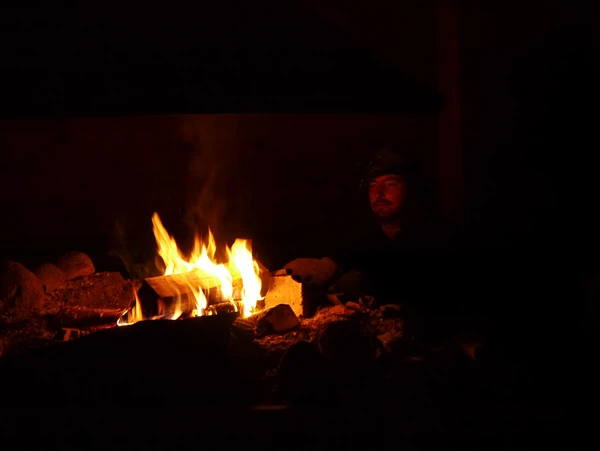
In the third year, I fell into the river so often that I thought about giving up.
Ben Andrews
Where did you get the motivation to continue?
HUGO We probably got most of our motivation from all from the people we met along the river. They were always asking us where we wanted to go and we would say: To the sea! We didn't necessarily mean that seriously, but somehow it developed in such a way that we started to really believe that, yes, we want to make it!
Some of these people accompanied you for years. How did these encounters come about?
HUGO Lots of people stood on the riverbank, amazed, and invited us for coffee or gave us food. And as we continued down the river, we would tell people who we had previously met and they would say, "Ah, that's my wife's brother." So, we were able to make a lot of connections over time, even when we got very close to the sea. And we got on so well with some people that they followed us each year and would meet up with us to spend an evening together.
Was there ever a point when your project was on the brink of collapse?
BEN In the third year, I fell into the river so often that I thought about giving up, and I would say from the fourth year onwards it became even more difficult. But there's something magical about the Vindelälven and the local people. They pull you back again and again.
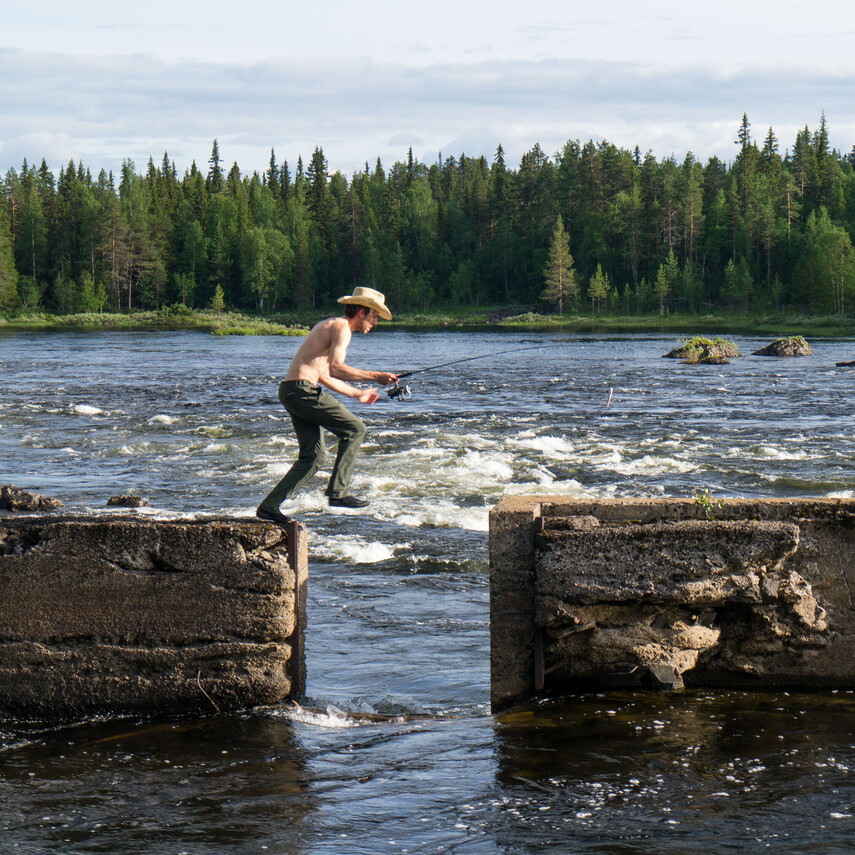
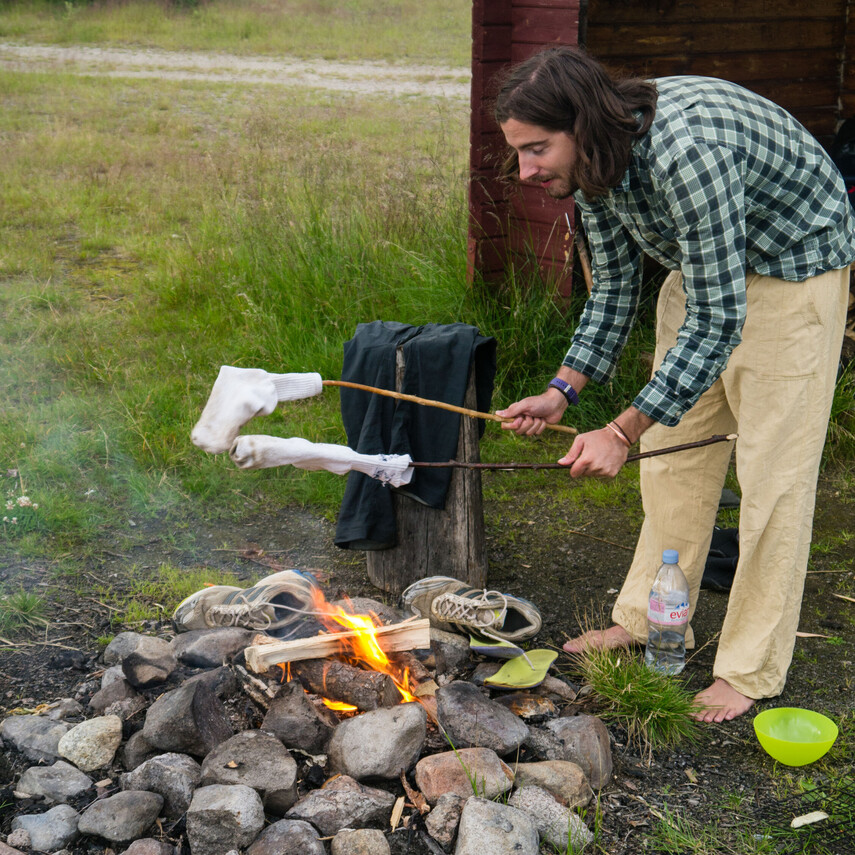
It warmed our hearts that the local people were so supportive.
Hugo Pedder
What do you take away from all these years on the Vindelälven?
BEN That there are a lot of mosquitoes in Sweden and you have to deal with them if you want to have a good time there [laughs].
HUGO Even when it got difficult, we were still so positive and were there for each other and I think that really helped us. And it warmed our hearts that the local people were so supportive, giving us shelter or food.
BEN It's also about getting out of your comfort zone—not just physically, but also with regard to being open and approaching people. It's created lifelong friendships that we wouldn't have if we'd just kept to ourselves.
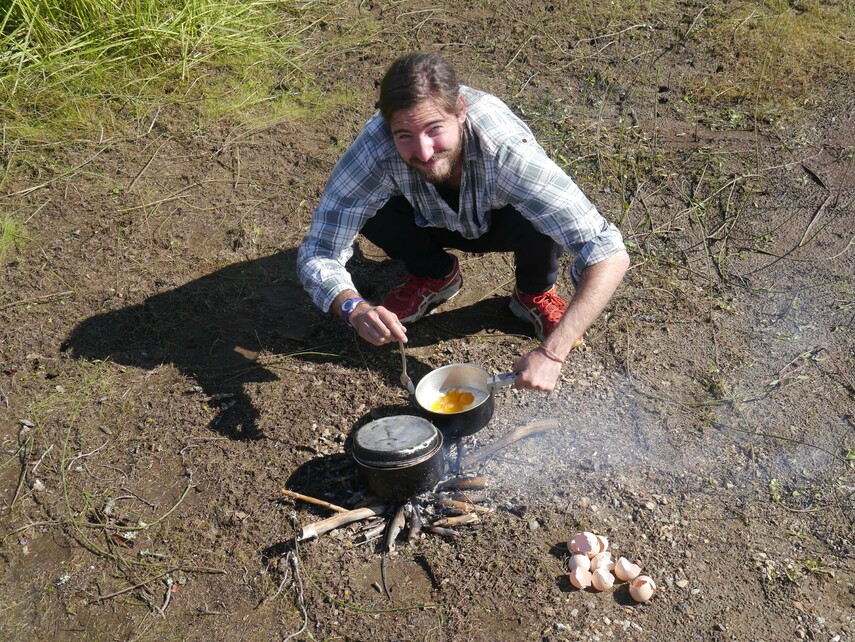
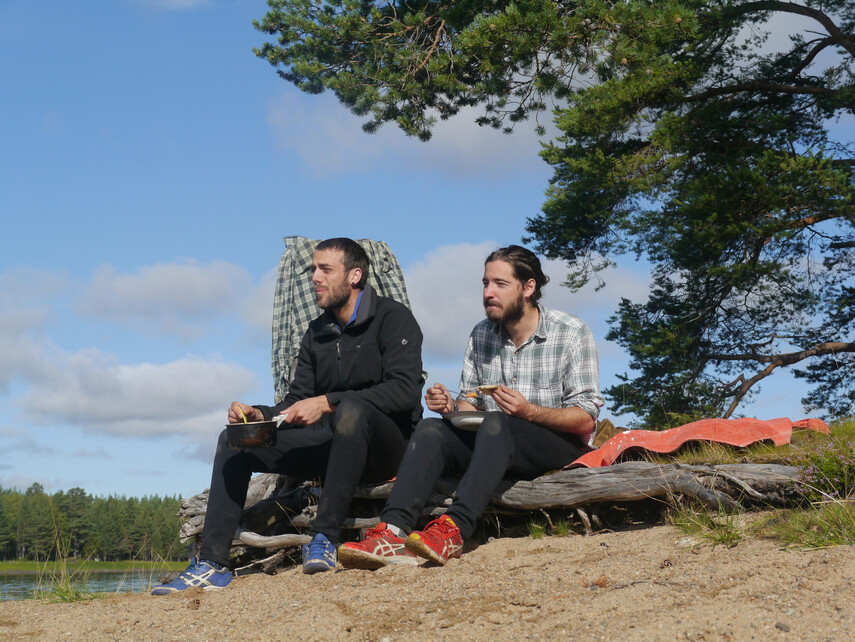
Where is Melissa now?
BEN We put the raft on skis and pulled it back up the frozen river on foot, partly with the help of some huskies. We set off from Sorsele in 2013, but the source of the Vindelälven is in Ammarnäs, which was another two incredible years on the river. Those were done in 2022 and 2023, so they aren't in this current film. Last year, we rafted past the place where we originally started and then actually went down the first rapids which we didn't dare to do when we encountered them back in 2013, which was cool. So now the raft is sleeping in the forest until next time.
And will you stay committed to pallet rafting?
BEN The Vindelälven is the "Golden River" but we still try to find interesting rivers where we can ride rapids on pallet-built rafts. In recent years, we have been on rivers in Scotland and Slovenia. The Vindelälven is unique though, so I think we will be back there again soon.
Thank you for the interview!
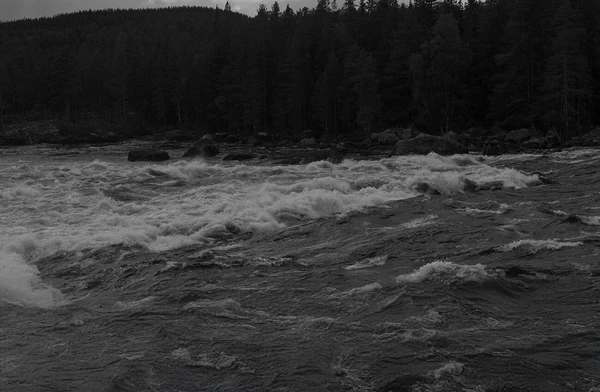
Curious?
Here’s a little glimpse into her film TO THE SEA!
Sneak peek: To the Sea
Want to see Hugo and Ben on the big screen?
Get your tickets for an event in your city!